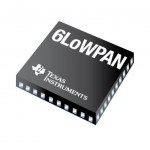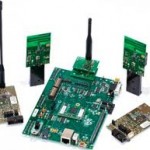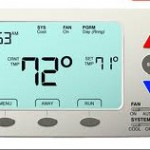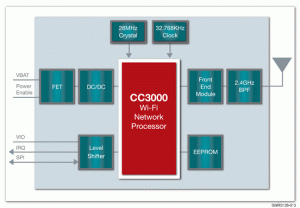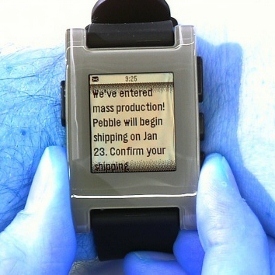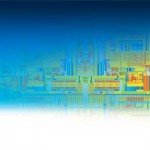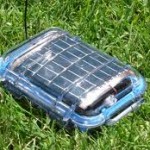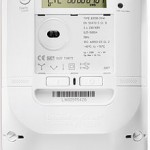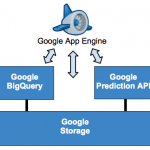Next in our series examining emerging low-power wireless standards, we consider 6LoWPAN, which stands for “IPv6 over Low-Power Wireless Personal Area Network”. This is a set of networking standards and specifications which is designed to address the ideas that the Internet Protocol (IPv6 in particular) can be and should be applied to even the smallest embedded wireless Internet-of-Things connected devices right out to the “end branches” of the network; and that power-efficient embedded devices with limited processing power should be fully able to be a part of the Internet of Things, including the use of IPv6 network connectivity.
Whilst the Internet Protocol is the workhorse for the Internet and local-area networks, the IEEE 802.15.4 standard defines the networking of wireless mesh devices. Although the two different protocols are inherently different, the 6LoWPAN specification defines encapsulation and header compression mechanisms that allow IPv6 packets to be sent and received over IEEE 802.15.4 wireless networks, essentially allowing the two standards to operate together, efficiently bringing the Internet to small, power-efficient, cheap devices without the relatively high cost, complexity and power consumption required to implement IEEE 802.11 wireless LAN connectivity at every wireless network node.
For example, a typical embedded 802.11 Wi-Fi module may consume 250 mA while it is awake and actively transmitting, and it may well require a separate microcontroller to interface it to the sensors or other electronics required for a particular application. On the other hand, a system-on-chip incorporating a microcontroller combined with an 802.15.4/6LoWPAN-compatible radio transceiver may only consume 25 mA when it is awake and actively transmitting RF data – an order of magnitude less power consumption.
6LoWPAN is well suited to small, compact, relatively low-cost embedded Internet-of-Things appliances that require wireless connectivity to the LAN and to the Internet but can accept connectivity at a relatively low data rate. Examples may include embedded automation, building control systems and wireless sensor networks in home, office and industrial environments, as well as smart energy metering, measurement and control networks. Devices such as smart meters may collate their data via a 802.15.4/6LoWPAN mesh network before sending the data back to the billing system over the IPv6 backbone.
Whilst IP networks are typically designed to optimise speed whilst managing traffic issues such as network congestion, 802.15.4 systems are designed to give a higher priority to efficient low-power operation and optimisation of memory use, maximising their utility on small, cheap, memory-constrained microcontrollers.
There are some complexities involved in interfacing the two systems elegantly – for example, whilst IPv6 requires a maximum transmission unit of at least 1280 bytes, the 802.15.4 physical layer allows a maximum of 127 bytes per packet, including the payload. The management of addresses for devices that communicate across both the dissimilar domains of IPv6 and IEEE 802.15.4 is also cumbersome, as is the routing of packets between the IPv6 domain and the PAN domain.
Since IP-enabled devices may require the formation of ad-hoc networks particularly during initial setup and configuration, the current state of neighbouring devices and the services hosted by such devices will need to be known. This requires a mechanism for device discovery of the neighbouring devices present in the network.
All 802.15.4 networks connected to the Internet, using 6LoWPAN or otherwise, do require the hardware and software of a physical “bridge” or “gateway” at some point or points in the network, in order to connect the 802.15.4 wireless mesh network to an 802.11 wireless LAN or wired Ethernet. Multiple such nodes mitigate the possibility of single-point failure of network connectivity for the mesh network, at the price of increased network complexity and hardware cost.
IPv6 nodes are assigned 128-bit IP addresses in a hierarchical manner, through an arbitrary length network prefix. IEEE 802.15.4 devices may use either 64-bit extended addresses or 16-bit addresses that are unique within a PAN (a Personal Area Network, which is a group of physically colocated 802.15.4 nodes) as long as an association between a node and a particular PAN has occurred. A particular PAN can also be identified by giving it a PAN ID, allowing the devices of that PAN to easily be recognised – for example, a particular PAN may be associated with a particular building or a particular room.
IEEE 802.15.4 is specifically intended for compact, cheap devices with a relatively low power consumption, operating efficiently from power sources such as batteries. After all, for networks of numerous Internet-of-Things appliances to become ubiquitous, individual wireless hardware nodes need to be as compact, unobtrusive and as cheap as possible.
Making each hardware device as small as possible also allows for portability and greater flexibility in how the devices are used – in wearable computing, for example. However, devices that don’t need to be wireless can be kept in the IP domain of the network and wired in to copper Ethernet – and if portability isn’t required, this means more bandwidth is available to the device. In such a case, a wired mains power supply may also be used, meaning that a larger amount of power is available.
In applications where wireless networking is required but device cost and power efficiency does not need to be so tightly constrained, or where more network bandwidth is required, 802.11 wireless networking may be chosen instead of 6LoWPAN over 802.15.4, keeping the device in the IP domain.
As you can imagine the 6LoWPAN standard offers new levels of compatibility with upcoming infrastructure and is perfect for low-power applications. And if this meets your needs but you’re not sure how to progress with a reliable implementation, we can partner with you to take care of this either in revisions of existing products or as part of new designs. With our experience in retail and commercial products we have the ability to target your product’s design to the required end-user market and all the steps required to make it happen.
We can create or tailor just about anything from a wireless temperature sensor to a complete Internet-enabled system for you – within your required time-frame and your budget. For more information or a confidential discussion about your ideas and how we can help bring them to life – click here to contact us, or telephone 1800 810 124.
LX is an award-winning electronics design company based in Sydney, Australia. LX services include full turnkey design, electronics, hardware, software and firmware design. LX specialises in embedded systems and wireless technologies design. https://lx-group.com.au
Published by LX Pty Ltd for itself and the LX Group of companies, including LX Design House, LX Solutions and LX Consulting, LX Innovations.

